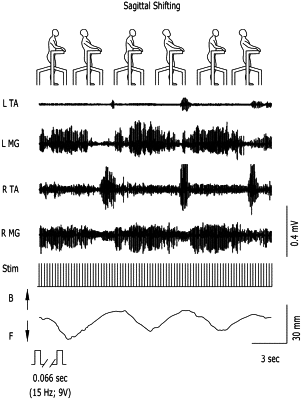| CPC A61N 1/36103 (2013.01) [A61H 1/0237 (2013.01); A61H 1/0274 (2013.01); A61N 1/0551 (2013.01); A61N 1/0553 (2013.01); A61N 1/0556 (2013.01); A61N 1/36003 (2013.01); A63B 21/00181 (2013.01); A61N 1/3616 (2013.01); A63B 22/0235 (2013.01); A63B 69/0064 (2013.01); A63B 2213/004 (2013.01); A63B 2220/805 (2013.01); A63B 2230/60 (2013.01); F04C 2270/0421 (2013.01)] | 20 Claims |

|
1. A method of enabling or improving, in a patient having a neurologically derived paralysis, control of one or more autonomic functions selected from the group consisting of cardiovascular function, body temperature, metabolic processes, sexual function, vasomotor function, or cognitive function, the method comprising:
receiving data related to the one or more autonomic functions in the patient during physical training using a training device, the training device configured to induce at least one of postural proprioceptive signals, locomotor proprioceptive signals, or supraspinal signals in the patient;
detecting, using a processor, the one or more autonomic functions in the patient during the physical training based on the received data;
selecting, using the processor, electrical stimulation parameters among a plurality of electrical stimulation parameters based on the detected one or more autonomic functions; and
applying, via an electrode array that is communicatively coupled to the processor, electrical stimulation using the selected electrical stimulation parameters to a portion of a spinal cord of the patient, the electrode array electrically coupled to the portion of the spinal cord,
wherein at least one of the electrical stimulation or the physical training is configured to modulate in real time electrophysiological properties of a spinal circuit in the patient so the spinal circuit is activated by the at least one of the postural proprioceptive signals, the locomotor proprioceptive signals, or the supraspinal signals that are derived from a region of the patient where the one or more autonomic functions are enabled or improved.
|